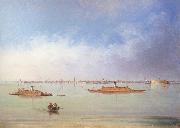All John Gadsby Chapman's oil paintings


|
|
|
| ID |
Image |
Oil Pantings, Sorted from A to Z |
Other Information |
| 49284 |
 |
Charleston Bay and City |
mk195
1864
Oil on board
11x15
|
| 74400 |
 |
Coronation of Powhatan |
English: "The Coronation of Powhatan," by the American artist John Cadsby Chapman, oil on canvas. Courtesy of the Greenville Museum of Art, Greenville, South Carolina.
Date circa 1835
cyf |
| 70655 |
 |
The Coronation of Powhatan |
"The Coronation of Powhatan," by the American artist John Cadsby Chapman, oil on canvas. Courtesy of the Greenville Museum of Art, Greenville, South Carolina. |
| 72635 |
 |
The Coronation of Powhatan |
"The Coronation of Powhatan," by the American artist John Cadsby Chapman, oil on canvas. Courtesy of the Greenville Museum of Art, Greenville, South Carolina.
cjr |
|
|
| John Gadsby Chapman
|
| American Painter, 1808-1889,was an American artist famous for The Baptism of Pocahontas, which was commissioned by the United States Congress and hangs in the United States Capitol rotunda. John Chapman was born in 1808 in Alexandria, Virginia. Chapman began his study of art in Philadelphia for two years, then departed for Europe where he eventually spent time in Italy. In 1831, Chapman returned to his hometown of Alexandria, and exhibited his artwork in the nearest metropolitan areas, such as Washington, D.C., Richmond, and Philadelphia. He specialized in landscapes and portraits. By 1834, Chapman had moved to New York City and become a member of the National Academy of Design, and found work as an illustrator. In New York, Chapman embarked on a series of historic paintings, such as Landing at Jamestown and the Crowning of Powhatan. The success of these paintings helped Chapman land a commission from the United States Congress in February 1837 to paint a historical scene for the rotunda of the Capitol building. For this work, Chapman received a total payment of $10,000. On November 30th, 1840, The Baptism of Pocahontas was formally unveiled in the Capitol rotunda. On the swell of this success, Chapman moved his family to Rome, and made an earnest living selling paintings of rural Campagna to American visitors. However, at the onset of the American Civil War, the tourist industry dried up, affecting Chapman fortunes greatly. In addition, Chapman own son, Conrad Chapman, returned to America to fight on the side of the Confederate States of America. The economic deprivation inflicted on Chapman during the 1860s became insurmountable. In Rome, he was forced to live off the kindness of fellow expatriates, and finally returned to America, sick and poor, to spend his last days with another son, John Linton Chapman, in Brooklyn, New York. It was there, in 1889, that he died a pauper.
. Related Artists to : | Carl Fredrik Hill | Baron Pierre-Narcisse Guerin | Paggi, Giovanni Battista | Willam Pitt | Ramon Casas i Carbo | |

|
|

|
|